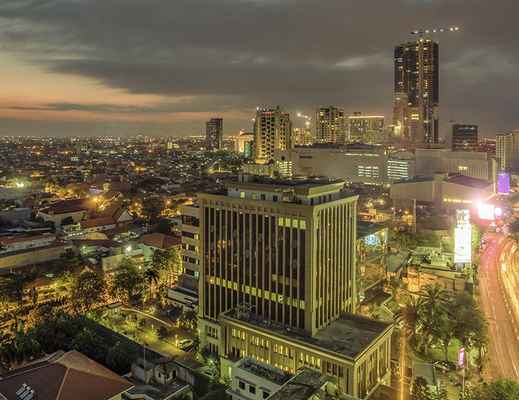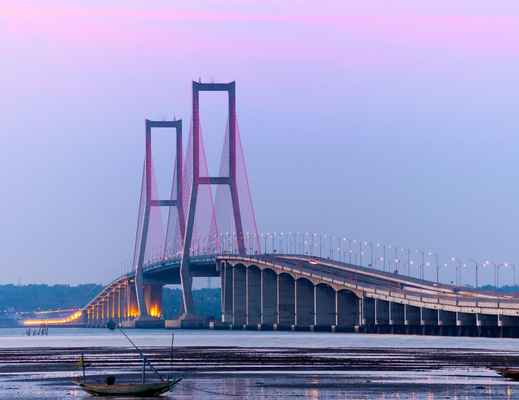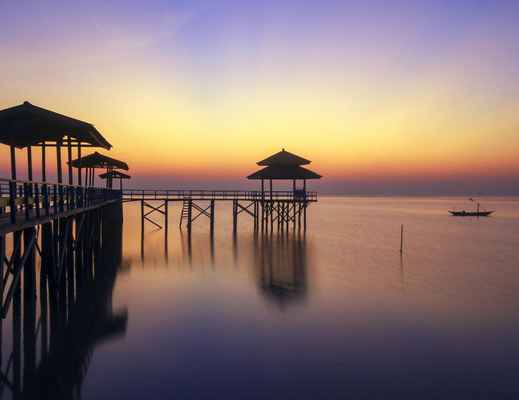


Surabaya
Asia
/
Indonesia
/
Surabaya
Perched on Java's eastern coast, Surabaya ranks as Indonesia’s second-most populated city and offers a thrilling mix of contemporary urban dynamics and deeply ingrained Javanese traditions. Despite its tropical climate and consistently high temperatures all throughout the year, it remains an attractive destination to visit, no matter the season.
Famously dubbed the "City of Heroes", Surabaya's culture draws from its history as a significant trading port and its pivotal role in Indonesia's fight for independence. Presently, the city buzzes with vitality as traditional markets jostle for space amidst sparkling shopping arcades, and ancient temples sit in contrast with colonial architecture.
What truly differentiates Surabaya is its outstanding street food culture, highlighted by the local rujak cingur – an unconventional salad made from boiled cow nose, assorted veggies, and a shrimp paste sauce. The Arab Quarter and Chinatown in the city retain cultural diversity through their time-tested traditions, reflected in the architecture, food, and lifestyle.
Noteworthy attractions include the breathtaking Suramadu Bridge – Indonesia's lengthiest bridge, connecting Java to Madura Island, particularly impressive at sunset. The historic Hotel Majapahit, a leftover from the colonial era, and the bustling Tunjungan Plaza exemplify the city's effortless integration of antiquity and contemporaneity. Experience the city's local allure through the Submarine Monument and the colorful Pasar Atom market.

Get to Know Surabaya
Take a tour of this destination's highlights
Popular Areas in Surabaya

Travel Tips for Surabaya
What you need to know before traveling here
Getting Around Surabaya
A guide to Surabaya's local transportation
The city is well-serviced by up-to-date, air-conditioned buses that operate along the major routes. The payment system is interesting – passengers can pay with plastic bottles as part of an eco-friendly initiative. These routes cut across significant tourist zones and shopping districts. For real-time tracking, download the Gobis app.
Practical Tips for Surabaya
Things to prepare and best way to visit
Like any other major city, Surabaya is generally safe for tourists. Nonetheless, exercise common precautions, like securing your belongings and being extra watchful in crowded places such as markets and bus stations.
Depending on the climate, May to September are agreeable months to visit, due to reduced rainfall. It’s advisable to skip January and February, usually the year’s rainiest months.
While basic English is spoken in tourist-friendly areas and major establishments, knowing a few local phrases is helpful but not mandatory.
For budget travelers, a daily allowance of $30-40 should suffice, whereas mid-range tourists might need around $50-80. These estimates include accommodation, meals, and local travel costs.
It’s better to stick to bottled water, which is inexpensive and readily available. Also, avoid ice from roadside stalls, unless explicitly mentioned that they use filtered water.
See All Practical Tips for Surabaya
Set off your journey to Surabaya
Plan smart & save big! Use discount code BISAYUK only for you

Flights

Hotels

Xperience

Get to Know Surabaya

Travel Tips for Surabaya
More Destination Near Surabaya






















 Facebook
Facebook Instagram
Instagram TikTok
TikTok Youtube
Youtube Telegram
Telegram
